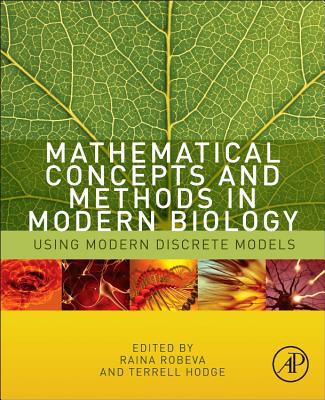MthSc 450, Spring 2013
MthSc 450, Spring 2013

"Mathematics is biology's next microscope, only better; Biology is
mathematics' next physics, only better." --Joel E. Cohen
"All models are wrong, but some are useful." --George E. P. Box
About the class
This class will be an introduction to mathematical modeling with a
particular focus on mathematical biology. We will sample from a
variety of problems and modeling techniques throughout the
class. Unlike most undergraduate math classes, the scope of this class
will be more about breadth than depth.
We will begin with some classical models such as the logistic and
predator-prey models for population growth and the SIR model in
epidemiology. Most of the class will be spent learning about a
relatively new but widely popular trend of discrete modeling. In
particular, the field of mathematical biology has been transformed
over the past 15 years by researchers using novel tools from discrete
mathematics and computational algebra to tackle old and new
problems. These ideas have impacted a wide range of topics such as
gene regulatory networks, RNA folding, genomics, infectious disease
modeling, phylogenetics, and ecology networks and food-webs. In some
cases they have even spawned completely new research areas. This is
approach is arguably more accessible and appealing to many scientists
and engineers, encouraging cross-disciplinary communication and
collaborations.
Resources
Homework
Homework 1: pdf |
tex. Due
Tuesday, January 22nd.
Homework 2: pdf |
tex. Due
Tuesday, January 29nd.
Homework 3: pdf |
tex. Due
Tuesday, February 5th.
Homework 4: pdf |
tex. Due
Tuesday, February 12th.
Homework 5: pdf |
tex. Due
Tuesday, February 19th.
Homework 6: pdf |
tex. Due
Tuesday, February 26th.
Homework 7: pdf |
tex. Due
Tuesday, March 5th.
Homework 8: pdf |
tex. Due
Thursday, March 14th.
Lecture notes
Part I. Differential and difference equations
1. Introduction to modeling. 4 pages. Updated Jan 22,
2013.
2. Difference equations. 4 pages. Updated Jan 22,
2013.
3. Analyzing nonlinear models
. 4 pages. Updated Jan 22, 2013.
4. Models
of structured populations. 4 pages. Updated Jan 29, 2013.
5. Nonlinear models of interacting populations. 5
pages. Updated Jan 31, 2013.
6. Infectious disease modeling. 7 pages. Updated Feb
6, 2013.
7. Modeling biochemical reactions. 5 pages. Updated
Feb 27, 2013.
Part II. Discrete and agent-based models
1. Boolean and algebraic models of gene regulatory
networks.
A. The lac operon regulatory network
in E. coli. 10 pages. Updated Feb 14, 2013.
B. A Boolean
network model of the lac operon. 5 pages. Updated Feb 14, 2013.
C. Using
Gröbner bases to find fixed points. 7 pages. Updated Feb 19,
2013.
D. Bi-stability and a differential equation model of
the lac operon. 8 pages. Updated Mar 1, 2013.
E. Boolean
models of bistable systems. 6 pages. Updated Mar 5, 2013.
F. Finite
dynamical systems and computational algebra preliminaries. 9
pages. Updated Mar 15, 2013.
G.
Reverse engineering of polynomial dynamical systems. 7
pages. Updated Apr 1, 2013.
